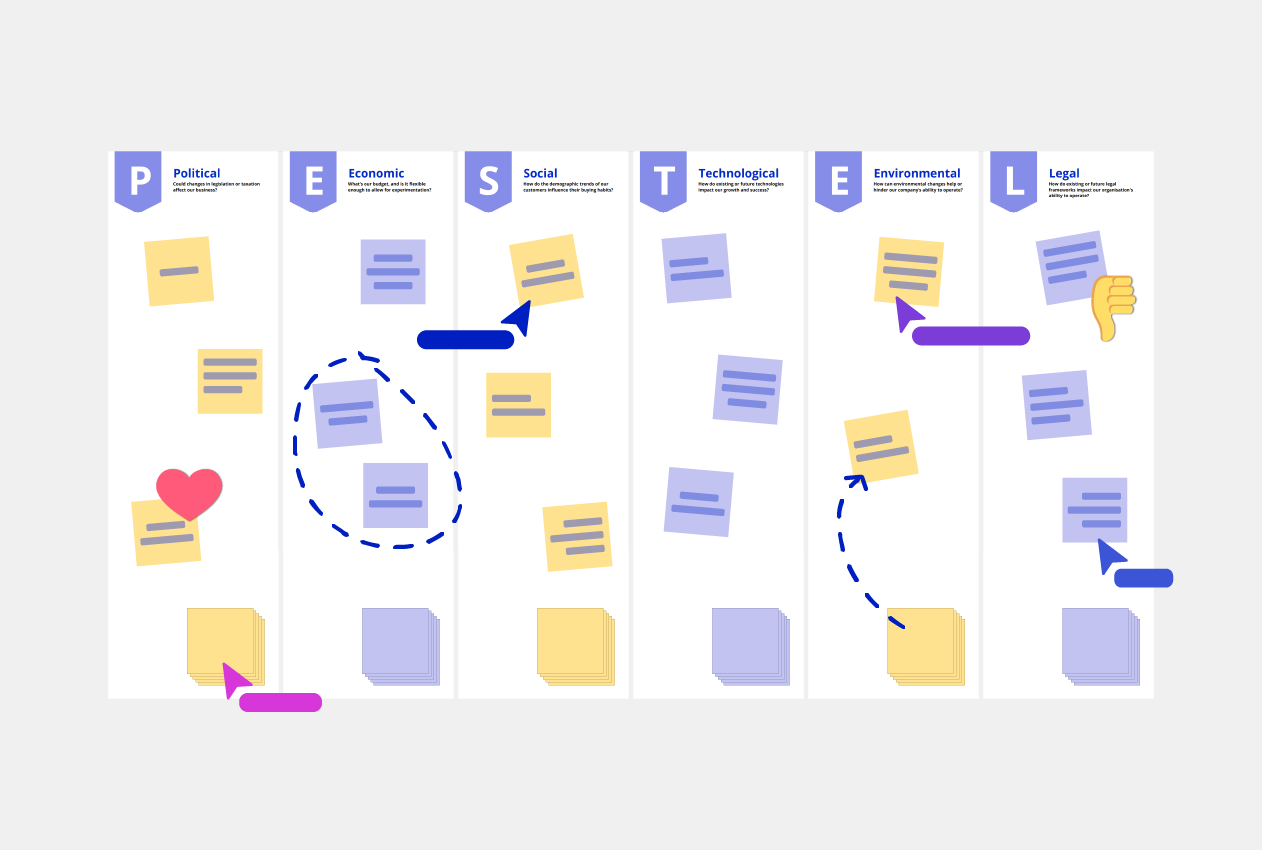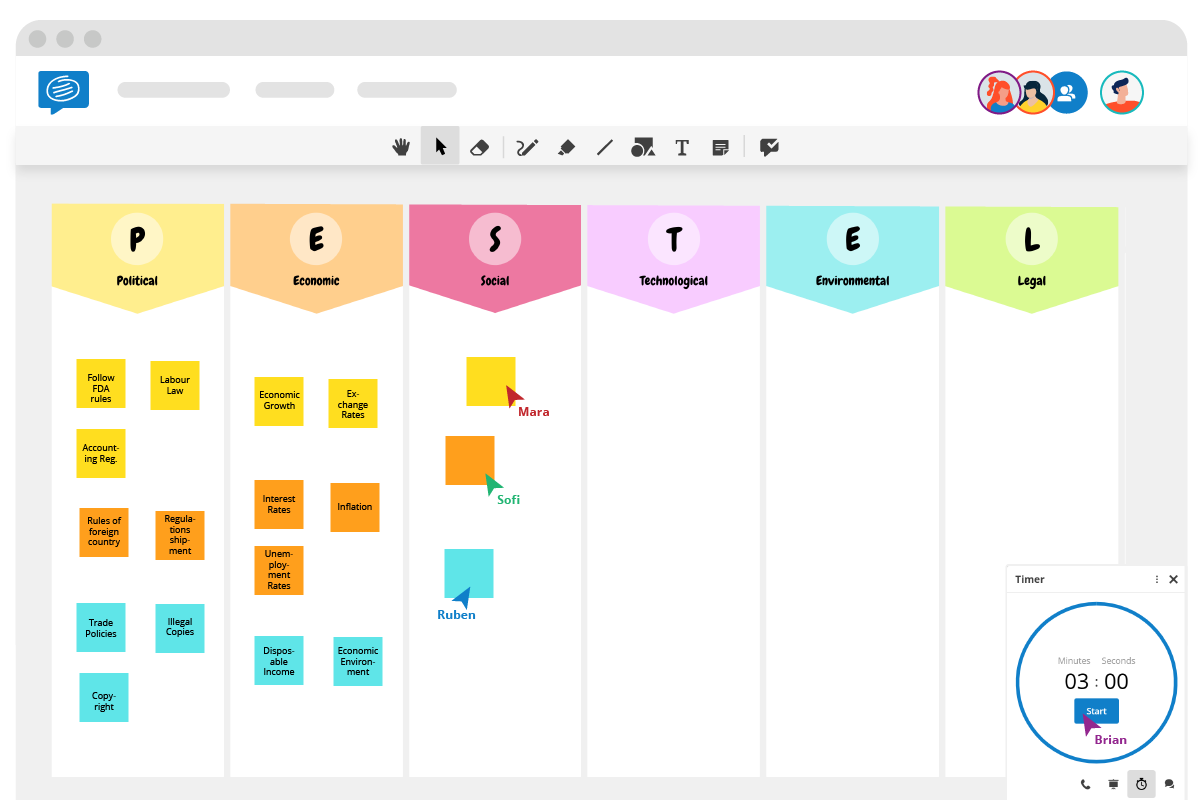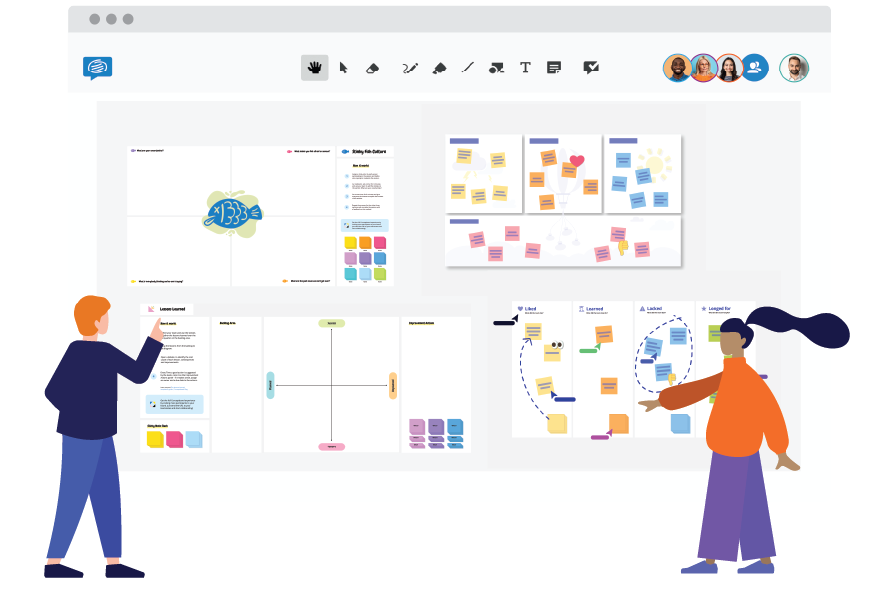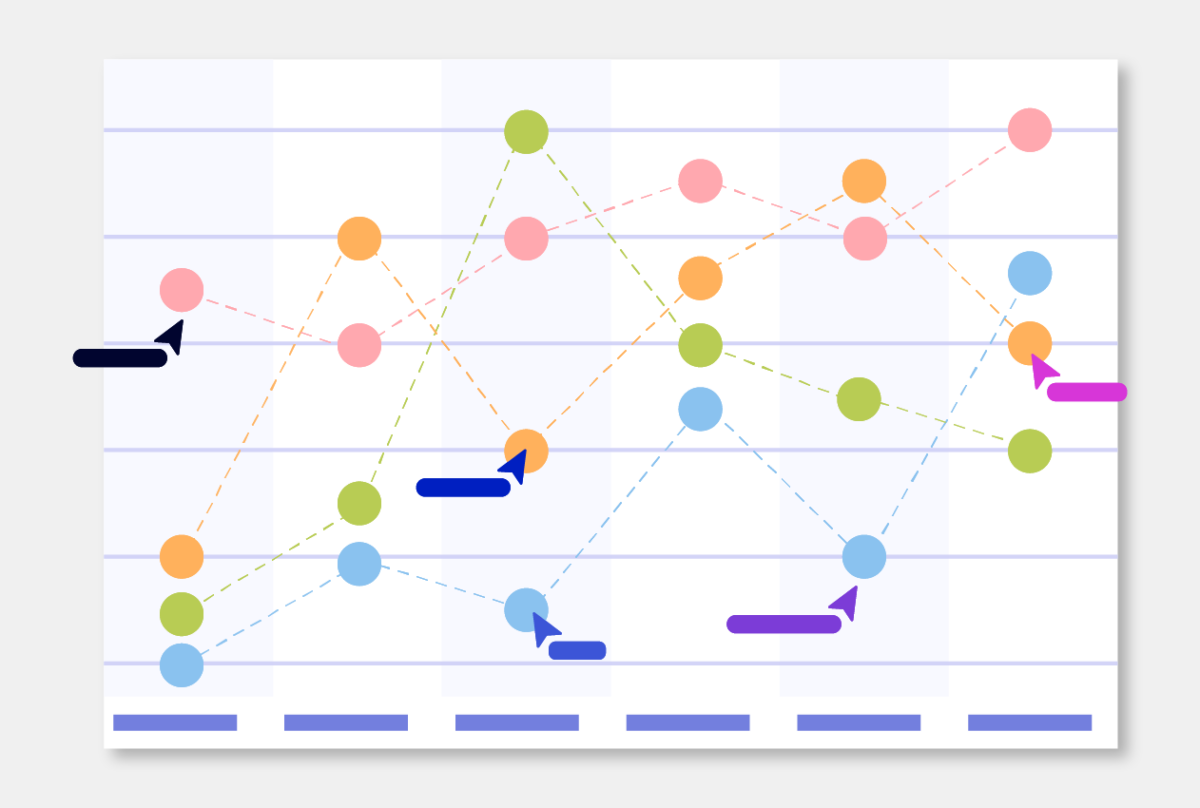This post is also available in: German
What is a PESTEL analysis and how to conduct one?
A PESTEL or PESTLE analysis is a tool used to analyze external macro-environmental factors of change in a business environment. It is a vital part of any strategic planning that will help you to examine and plan for any external factors that could affect your company- Political, Economic, Social, Technological, Environmental and Legal.
By analyzing your business according to these six factors, it will differentiate you from the competition and future-proof your operations, giving your business the competitive advantage it needs as you expand and grow. Combined with the product-specific SWOT Analysis and BCG matrix for portfolio management, it’s an invaluable tool for any business planning to enter a new or changing market. Jump onto our free pestle analysis template below!

Sections of a PESTEL analysis template
The Pestel framework has 6 sections, each of which provide insights into a market’s feasibility. Fill in the following sections for a strategic overview.
Political
The first factor to consider when performing a PESTEL analysis is how the government of a country intervenes in the national economy through policy setting or rules for business. This includes state or federal policies around imports and exports, tax and investment and data protection laws.
When considering the Political factors, here are some key questions to ask:
- Who are our stakeholders?
- When is our country’s next local, state, or national election? How could this change government or regional policy?
- Could any pending legislation or taxation changes affect our business, either positively or negatively?
Economic
Next, you want to look at the broader economic climate your business is operating in, both from the country’s economy and the consumers side. How stable is the current economy? And how much purchasing-power do our customers have?
When considering the Economic factors, here are some key questions to ask:
- Do we operate on a budget? Is it realistic? Does it give us enough flex to try things?
- Are customers’ levels of disposable income rising or falling? How is this likely to change in the next few years?
- Has demand for our products services grown / shrank / stayed the same?
Social
The demand for many products changes with the changes in social attitudes. Thus, it’s extremely important to look at the current socio-cultural situation. This covers things such as age and population growth rate, religious beliefs, gender norms, class structures, internet usage habits, customs and beliefs and lifestyle choices.
When considering the Sociological factors, here are some key questions to ask:
- How do religious beliefs and lifestyle choices affect the population?
- Are generational shifts in attitude likely to affect what we’re doing?
- What are our society’s levels of health, education, and social mobility? How are these changing, and what impact does this have?
Technological
This section may not have ever been as important as it is today due to the extreme rate of technological advancement we are currently experiencing. You need to examine the availability of technology available to both you and to your customer.
When considering the Technological factors, here are some key questions to ask:
- How well do we use technology?
- Are there any new technologies that we could be using that our competitors are using?
- What can we learn from the data we collect?
Environmental
Environmental factors that can affect your business include weather, especially climate change and natural disasters, recycling, changes to packaging and materials, and societal rejections of certain materials, e.g. plastics, straws, and shopping bags.
When considering the Environmental factors, here are some key questions to ask:
- How do we stay aligned to our objectives and what we believe in?
- Are there any current environmental programs/partnerships our brand can participate in?
- How can we source, trade and test our products?
- Is everything we do ethically sound?
Legal
In today’s global economy, it’s important that business managers have thorough knowledge about the major laws that protect the business enterprises, consumers and society in all markets they operate in.
When considering the Legal factors, here are some key questions to ask:
- How are we impacted by changes to legislation and regulation?
- How do we keep ourselves compliant?
- Are we up to date with data protection laws in all countries we operate in?
Now that you know what questions to ask and what factors to consider, why not try your hand at your very own PESTEL analysis?

Discover visual collaboration
PESTEL analysis example: Coca-Cola
In order to better illustrate what a finished PESTEL analysis looks like, we’ve created an example of an analysis of Coca-cola using our template.

If you’d like to explore more of our free strategic management tools such as The Balanced Scorecard, Porter’s 5 Forces Analysis and the risk matrix, you can access our vast library of collaborative templates on our blog.





2 Comments. Leave new
Was very helpful, thank you
This was very helpful and resourceful in my research.